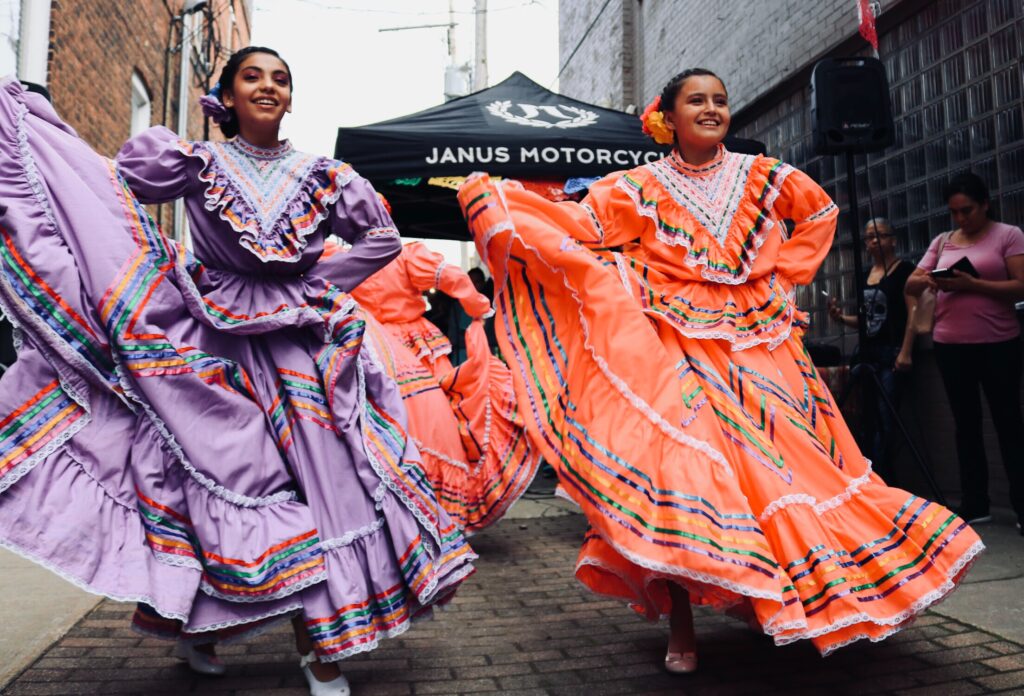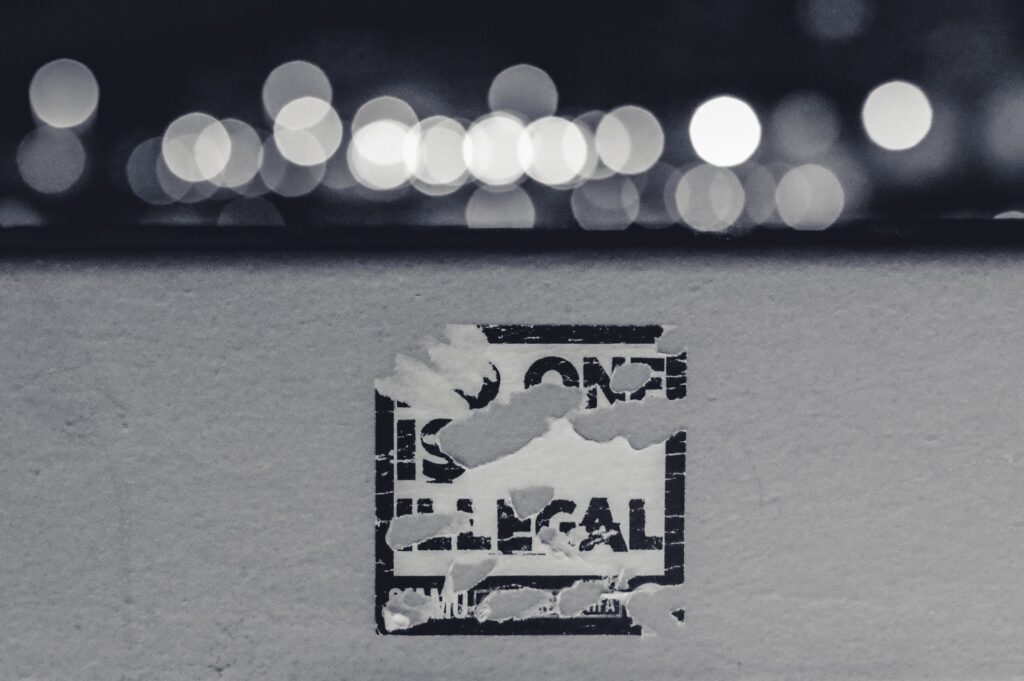Latino Identity Development in the US
June 19, 2023
Growing up Latino/Hispanic in the US
As a child, I had no awareness of what it meant to be not white. I knew there were negative ideas about People of Color, but I had not yet understood myself as a racial being. I did not see myself or my people as different from anyone else, much less white people.
By elementary school, I had been introduced to negative ideas and stereotypes about racial and ethnic minorities, including my own. But it was not until middle school that I would become targeted and subjected to racism. That was also when friends and acquaintances taught me that there were things people who looked like me did and were supposed to be like.
It was strange for me to partake in American activities (things white people like and do), like listening to rock music. And I was exceptional for speaking as they did, unlike their idea of someone from the ghetto. I began to view myself as a brown girl instead of just a girl. I was [Hispanic], and they were normal people.
It was during this time that my racial identity began to warp. It would take many years for me to reconnect with my identity and heritage positively.
In this article, I explore the concept of race and identity formation among Latinx individuals in the United States. I discuss the factors contributing to developing one’s racial identity and how this differs for Latinos.

The Stages of Latino/Hispanic Identity Development: Casual, Cognitive, Consequence, Working Through, and Successful Resolution
There are generally five stages in the formation of racial identity among Latinos in the US: Casual Cognitive, Consequence, Working Through, and Successful Resolution.
- The Casual Stage: During this challenging period, it is common for individuals to receive messages from the environment and significant others that may either affirm or denigrate their ethnic heritage. These messages, or lack thereof, can profoundly impact an individual’s sense of self and identity. Individuals may experience traumatic or humiliating experiences related to their ethnicity. This can lead to a failure to identify with Latino culture, resulting in feelings of isolation and disconnection from their community.
- The Cognitive Stage: Individuals are constantly exposed to negative or distorted messages about their Chicano/Latino heritage. They may develop erroneous beliefs that can impact their mental health and, ultimately, their success. These beliefs may include the association of ethnic group membership with poverty and prejudice, the belief that assimilation into White society is the only means of escape, and the belief that conforming is the only possible road to success.
- The Consequence stage: This stage comes after the Cognitive setting when the individual starts internalizing the negative messages about their ethnicity and race. This often leads to feelings of discomfort, alienation, and even internalized racism. Fragmentation of ethnic identity becomes very noticeable and evident when a person feels ashamed and embarrassed by ethnic markers such as name, accent, skin color, cultural customs, and so on. This unwanted self-image can lead to estrangement and rejection of one’s heritage. There is also a strong sense of pride in increasing assimilation.
- The Working Through stage: At this stage, individuals begin to actively confront their uncomfortable feelings and begin to explore new ways of thinking and behaving that have the potential to bring about positive change for themselves, as well as for their peers and the broader Latinx community.
- The Successful Resolution stage: In this stage, the individual has worked through their discomfort and has realized that their differences are a cause of strength rather than a source of weakness. This stage results in greater confidence, self-esteem, and in some cases, a commitment to activism.
By understanding and examining the stages of developing racial identity among Latinos in the US, we can better understand the current state of race relations and how to improve them.

Your family’s influence on your racial identity
Your family is a crucial factor in understanding and developing your racial identity. Family dynamics and shared experiences are a massive part of interpreting race. So it is essential to consider your family’s influence on your racial identity.
Parents, siblings, and extended family members can shape how you think about your racial identity. They can also influence how you interact with and form relationships with members of other races. Parents, in particular, can pass on ideals, values, and beliefs that influence how a person develops their racial identity. The ideas we get from our parents and even grandparents can be positive or negative, overt or subtle.
Families and members of the same race or ethnicity can disagree on how to view and interact with others. It’s essential to consider the impact of family dynamics on your views on race. Remember that your racial identity doesn’t have to be defined by those around you. You can reject or embrace various aspects of your family’s beliefs and opinions and represent your views and goals.

How your community shapes your racial identity
Your community plays a vital role in how you develop your racial identity. Growing up, you might have experienced a predominantly homogeneous community. Or, you might have experienced a mix of people from different racial and ethnic backgrounds. The messages you hear, how people interact, and the opportunities and resources available can influence your thoughts on race.
For example, spending time in predominantly Latinx or highly diverse areas can encourage a sense of community. It can also create an environment where people can learn and grow together and embrace their cultural heritage. This can be incredibly empowering, opening doors to unique experiences unavailable to people from other backgrounds.
No matter your background, exploring your community and its history can help you develop your identity, values, and goals. Finding mentors who strongly advocate for diversity, inclusivity, and equality can also be helpful. With their insight and experience, they can be invaluable resources to help you learn and grow.

Racism and discrimination in the US
The Latine/Hispanic population in the US often experiences racism, prejudice, and discrimination, which impacts their daily lives in several ways.
Stereotypes, systemic racism, and discrimination make it difficult for Latines to feel accepted. This can often lead to lower educational attainment, health problems, employment barriers, and poverty.
At the same time, the racism and discrimination Latinos face within their communities often go unrecognized. Discrimination and prejudice based on class, gender, and language can be just as damaging and hurtful as racism from people from other cultures.
To this day, I get anxious when I speak Spanish in public. This is because strangers have accosted me for speaking Spanish in public settings. Men on the road have yelled at me for playing Hispanic music in my car. More often, strangers have made comments, even jokingly, that ultimately express negative feelings about people speaking Spanish in their presence.
For example, several times, people said that I and whoever I spoke with would probably start talking about them. This would prompt me to take my conversation elsewhere or stop completely to make others comfortable, even if I was helping a Spanish speaker by translating.
The best way to confront racism and discrimination within the US is to become aware of what is said about the Latino community and take action to challenge it. This means speaking out against negative stereotypes, celebrating diverse cultures and identities, and using your voice to support those in the community who may be facing discrimination.

Discovering your roots
Discovering your Latino/Hispanic roots is a great way to learn more about your identity and better understand who you are. Learning about the culture and history of the people can help empower and inspire you. It can also strengthen your sense of connection to other Latinos in the US. Here are some ways to do this!
Trace Your Family Tree.
One way to explore your roots is through your family tree. I have found that this is a particularly challenging task for Latinos. Colonization destroyed records and displaced the communities of our ancestors. Institutional racism encouraged generations of ancestors to deny their ancestry and cut ties with Indigenous communities.
However, The Hispanic Genealogical Research Center (HGRC) of New Mexico may be a great place to start, even if your ancestry is not from Mexico. They have a great online database and forums where you can communicate with others working to trace their ancestry.
Uncover Your Ethnic Ancestry with DNA.
Tracing your ancestors back to their country of origin can help you uncover a more complete picture of your identity. Another great tool to use is 23andMe and Ancestry.com. By submitting a sample, you will be entered into a database and matched with people who share your DNA. This can help you connect with distant relatives and learn about your family history.
In addition to genetic testing, you can gather information from historical records. Some of the records available on these sites are census data, immigration records, and birth and death certificates. These can provide clues about where your ancestors lived, their professions, and other interesting details.
Research the country your family came from.
Learning more about your ancestors’ language, food, traditions, and beliefs can also provide an invaluable look into your past. Most of us know where our immigrant ancestors came from as they were our grandparents and parents. Go online and learn about the cities your family has talked about.
You can also read up on Latin American studies.
Observe customs & traditions.
I wish I had paid more attention when my grandmothers taught me how to cook their recipes. Unfortunately, I was much younger and didn’t realize how little time I had left with them. There were several dishes whose names I couldn’t recall. Thanks to the internet, I could locate the dishes by entering key ingredients and descriptions of the dishes into the search engines.
I found that most countries have their versions of the same dishes. When I would select the recipes from the countries my relatives came from or the countries next door, I could find exactly what my grandmothers made. Cooking these dishes made me feel close to them, gave me a sense of pride in my ancestry and identity, and allowed me to share them with my family. And that means I am passing on traditions.
Get involved in your community.
Another way to connect with your Hispanic heritage is through the arts and culture. Check out local events that celebrate the diverse cultures of Hispanics (whether you are in the US or elsewhere). Attend a Hispanic festival, visit a community center specializing in Latin American culture, or explore your local library’s collection of books, music, or films from Latin American countries.
Embracing your Hispanic roots is a powerful way to build a positive Hispanic identity and foster a sense of pride and connection to the broader community.

Defining your own Latino/x identity
The key to developing a robust Latino/Hispanic identity is understanding the unique aspects of your identity and the history of Latinos in the US.
Defining your Latino identity means understanding what makes you unique. It also means connecting with a broader sense of Latinx heritage and history.
One way to understand your identity is to explore the cultural contributions of Latin Americans. From arts and literature to music and dance, exploring Latino heritage produces great knowledge and pride. Researching Latino contributions to the US and the world can help you heal from the negative messages you’re accustomed to. It also helps to open up a greater understanding of what it means to be Latino.
In addition to understanding Latino identity’s history and cultural context, it’s also essential to consider your own story. Exploring topics such as family, upbringing, and immigration status can help to build understanding.
Finally, it is critical to understand what it means to be Latino in today’s world. Learning about current issues such as immigration reform, economic development, and social justice is worthwhile. These steps can help reinforce a sense of identity and connection to the community.
This is a fantastic article on how to identify ways in which racism has isolated and shamed Latinos in the U.S. Along with how to reclaim Latino identity in a way that promotes pride in Latino culture, reconnects a person to their Latino roots, and provides ideas to express Latino culture in everyday life while living in the U.S.
In my opinion, it’s essential to feel connected to our roots/culture to provide us with community, well-being, and to celebrate our ancestors, family, and friends. My favorite part of this blog entry is the topic of “defining your own Latino/x identity” because everyone is going to have a different perspective on Latino culture and that will bring more expansion and beauty to what is already available.